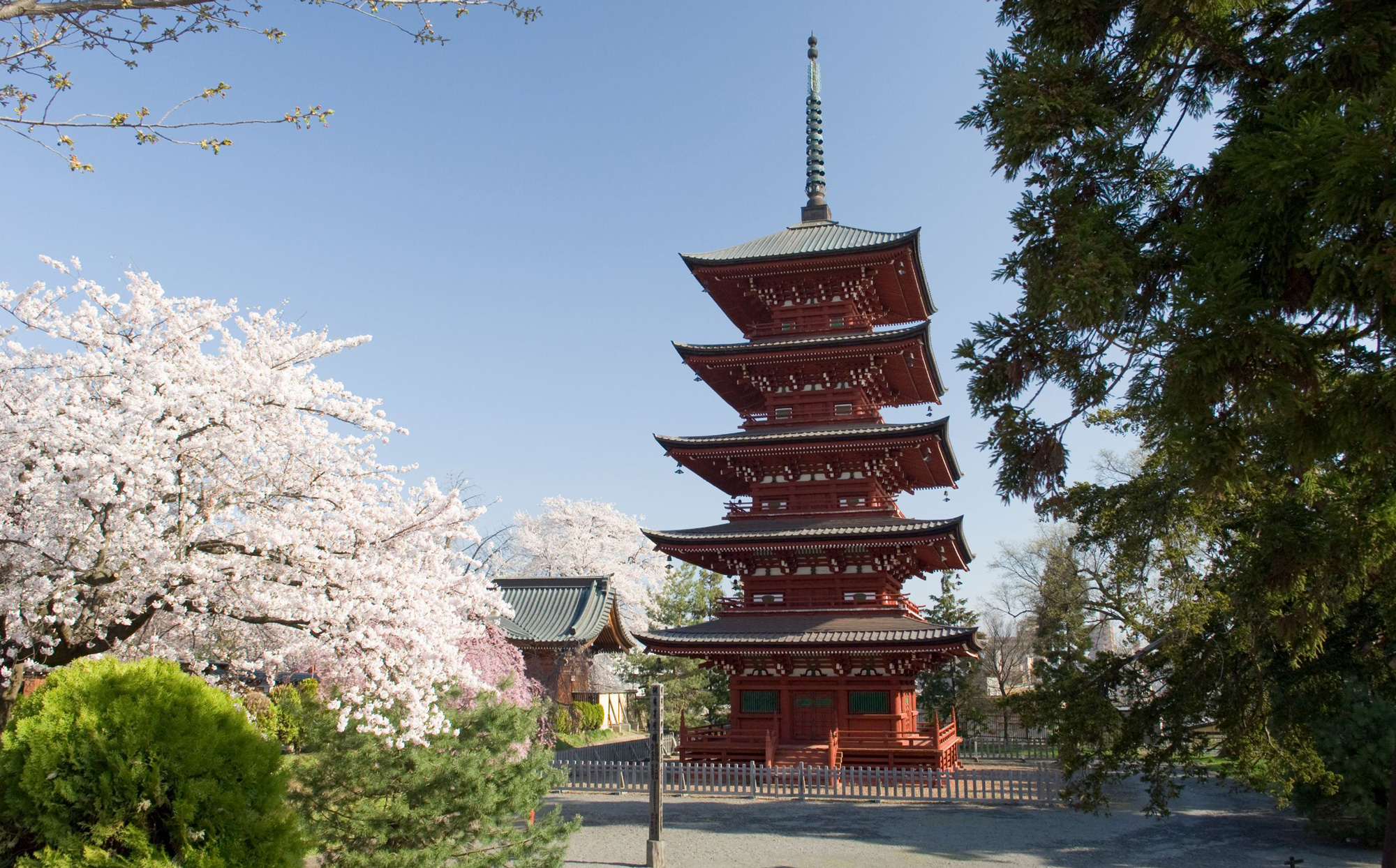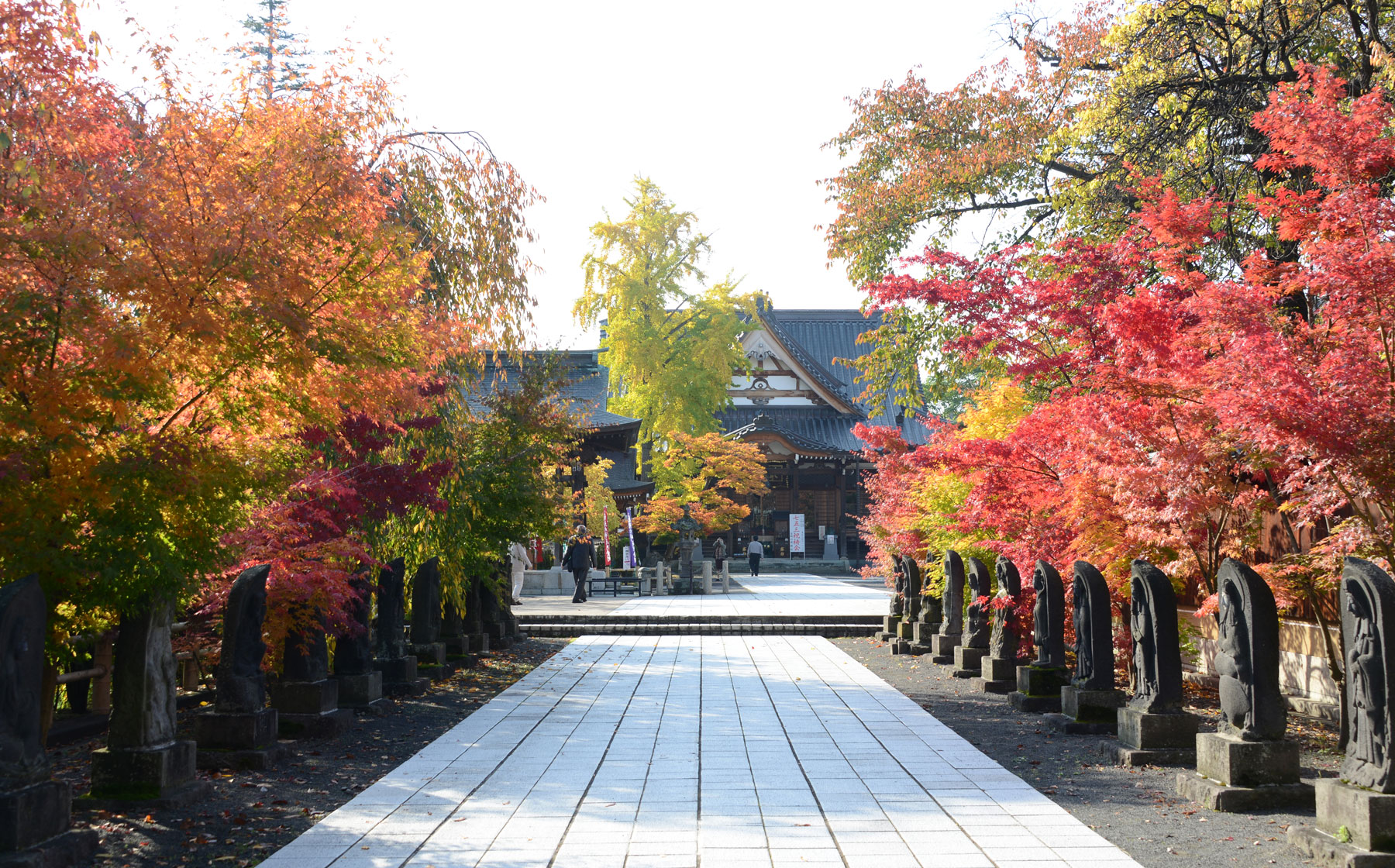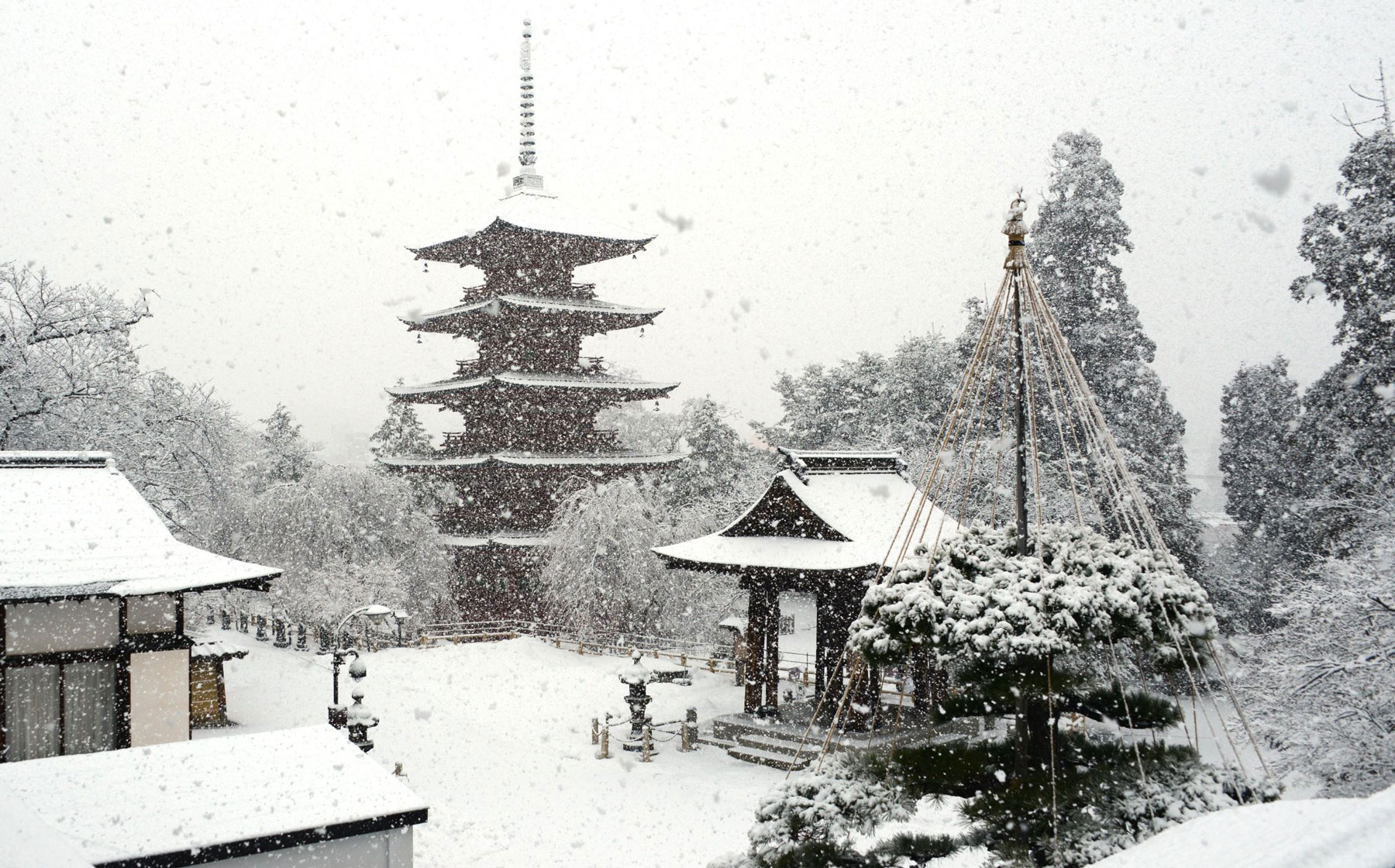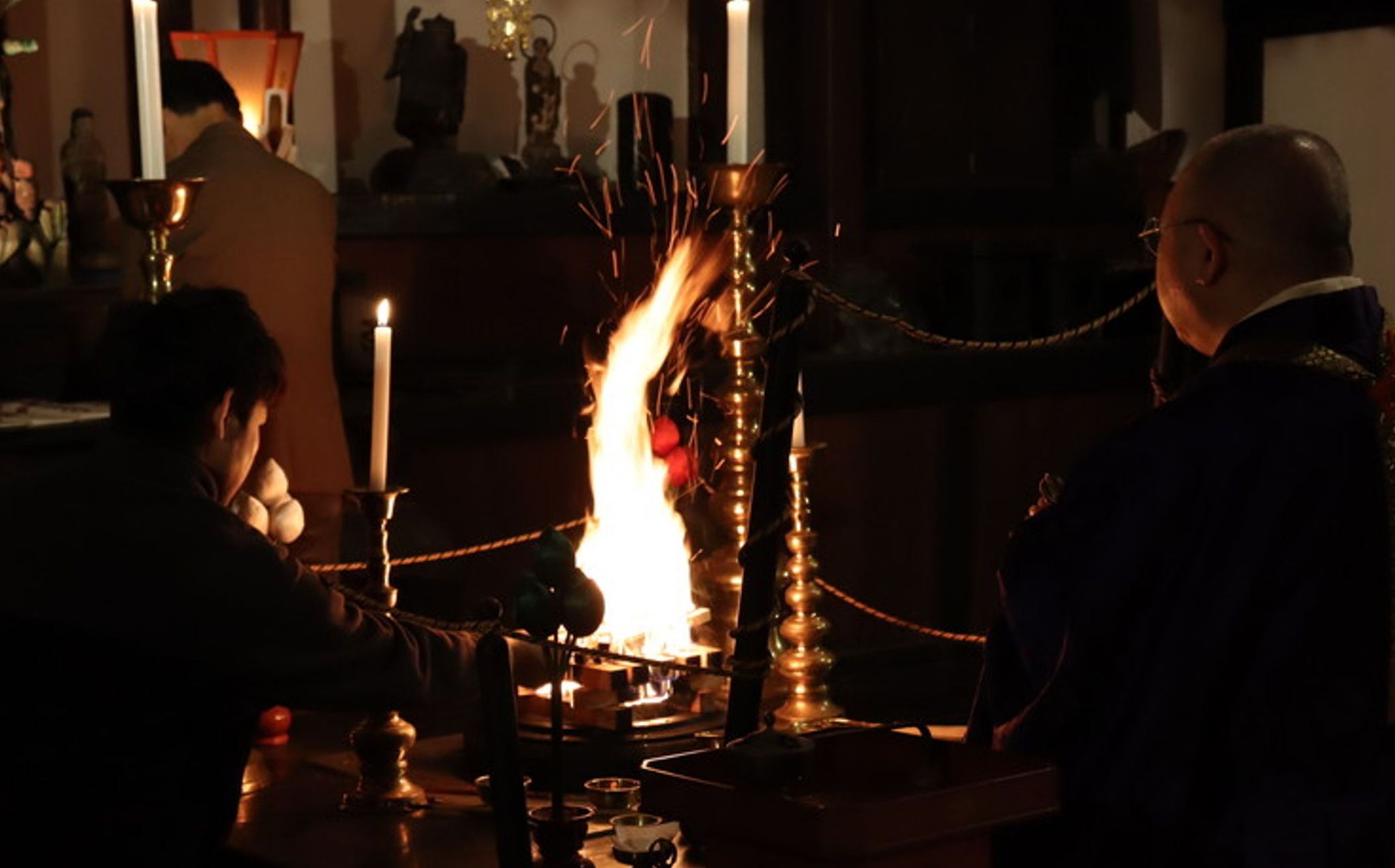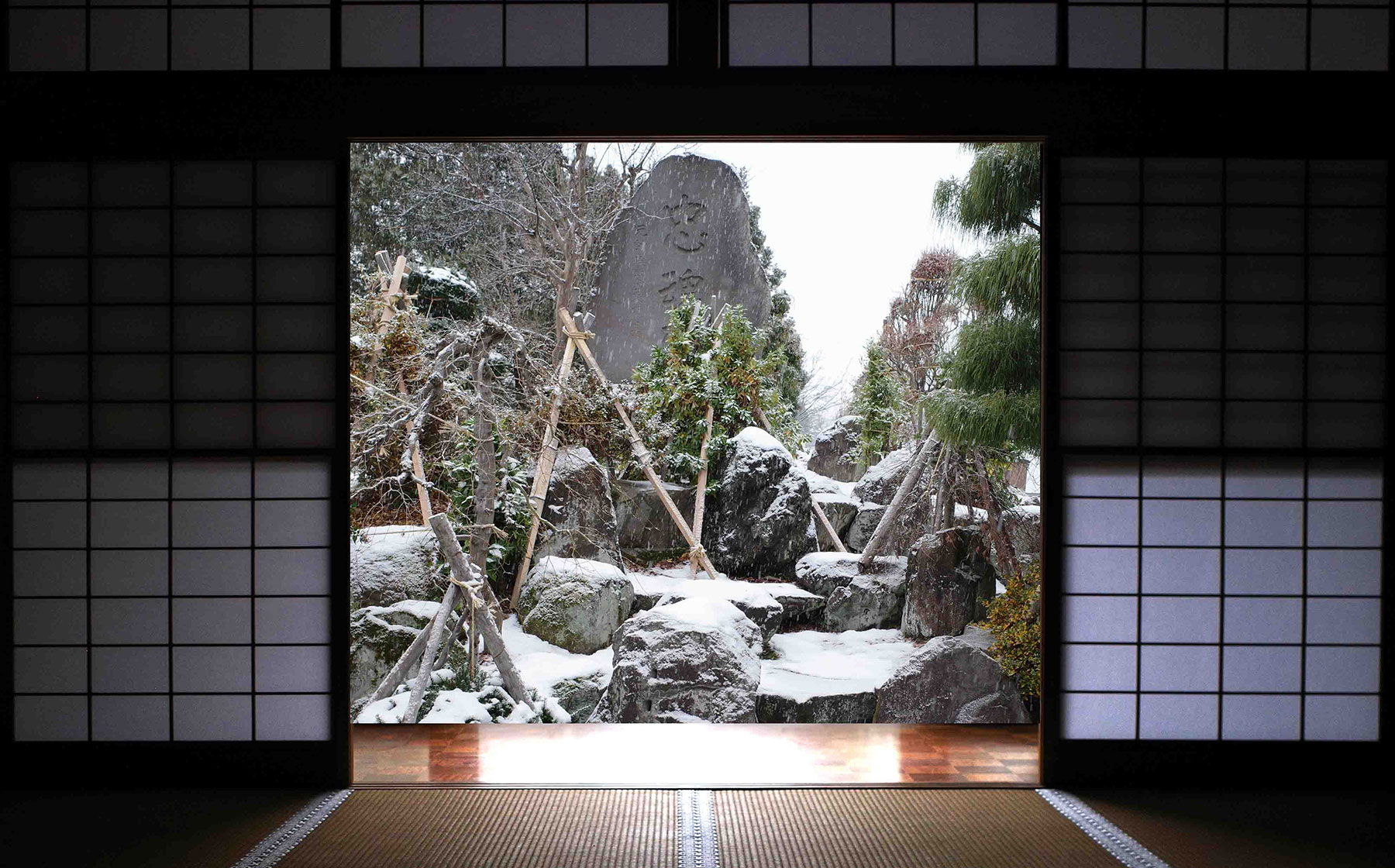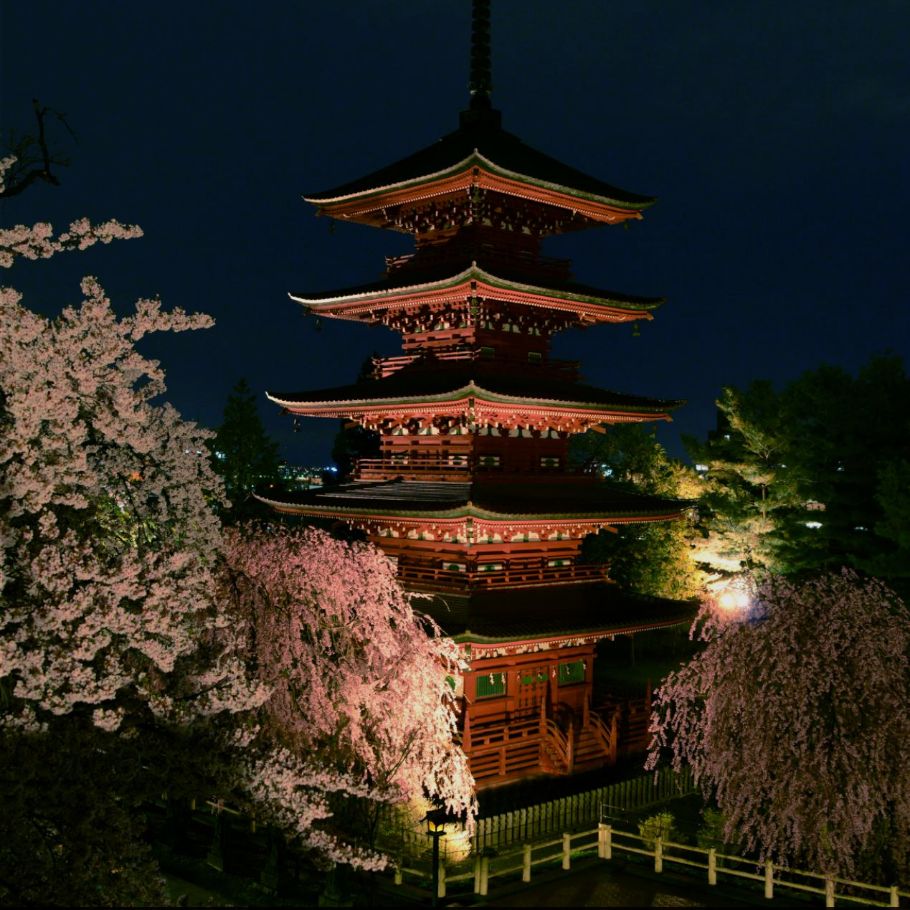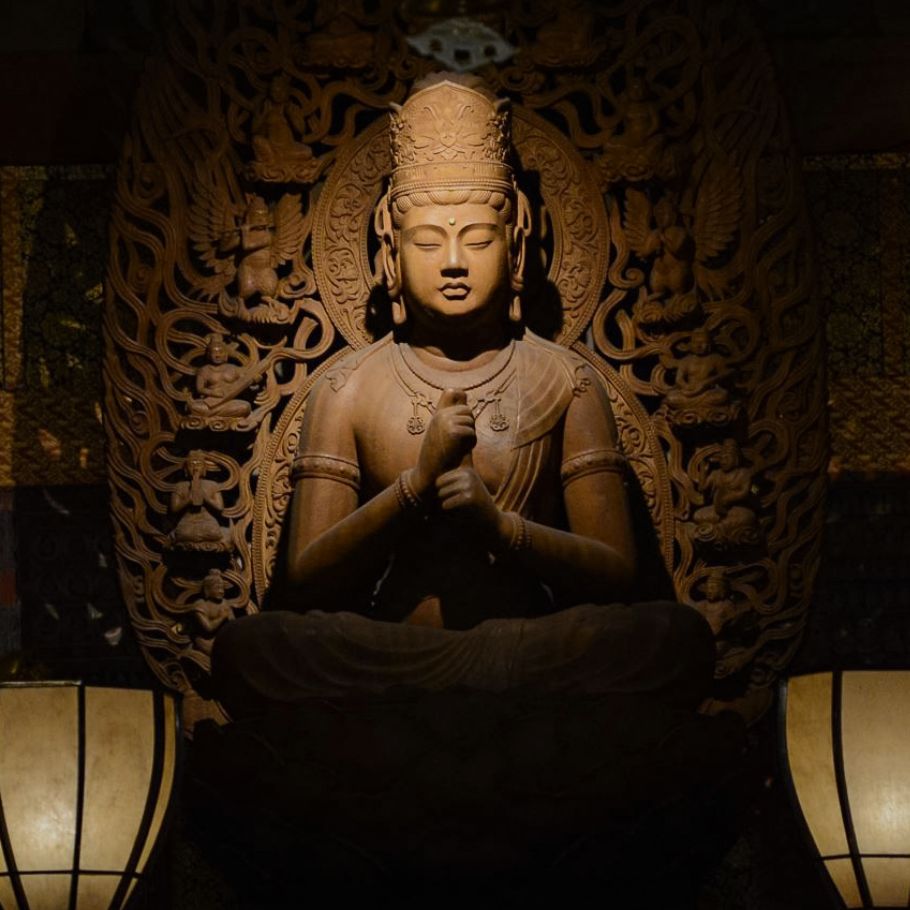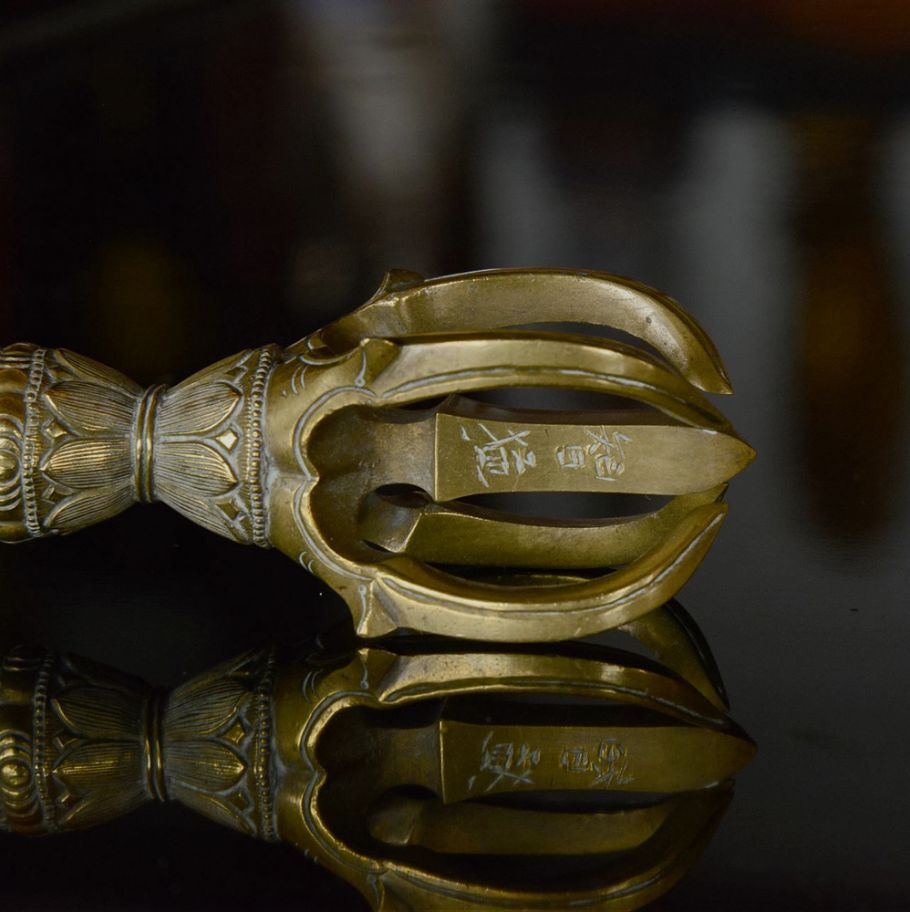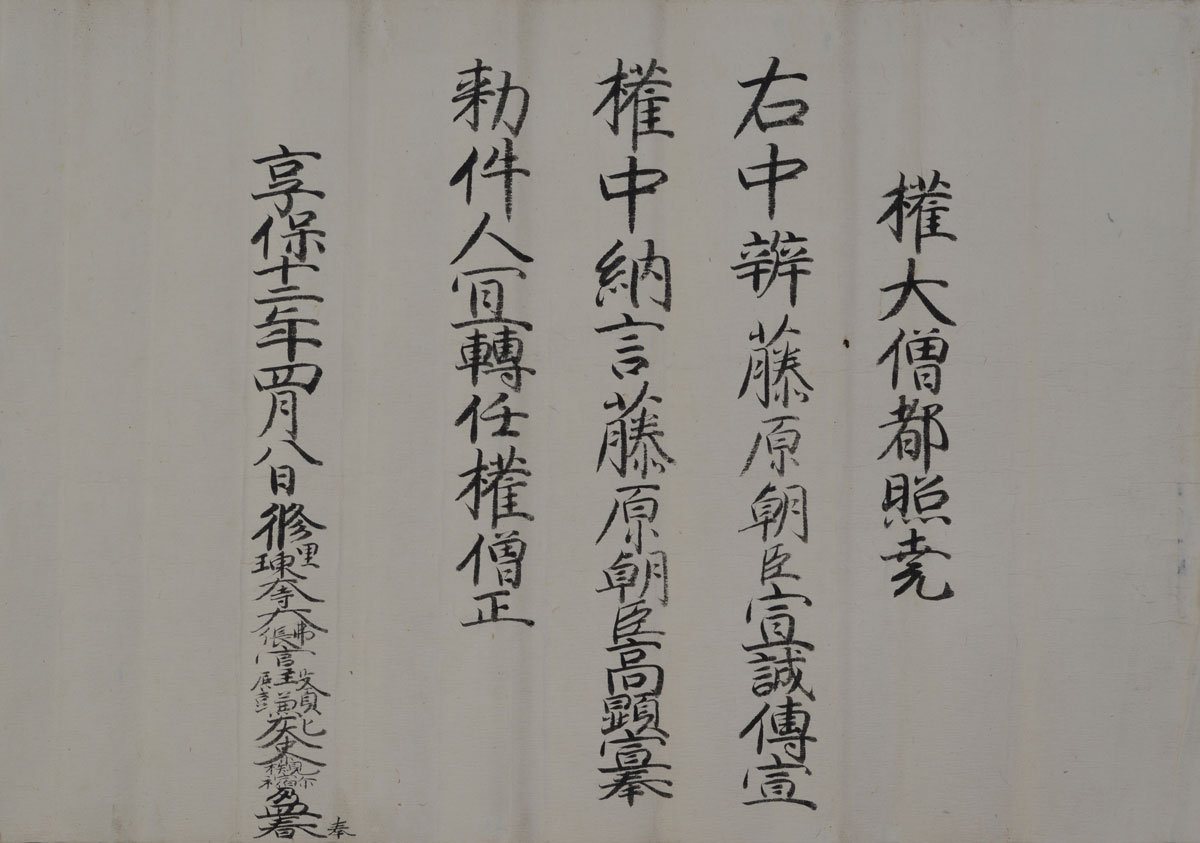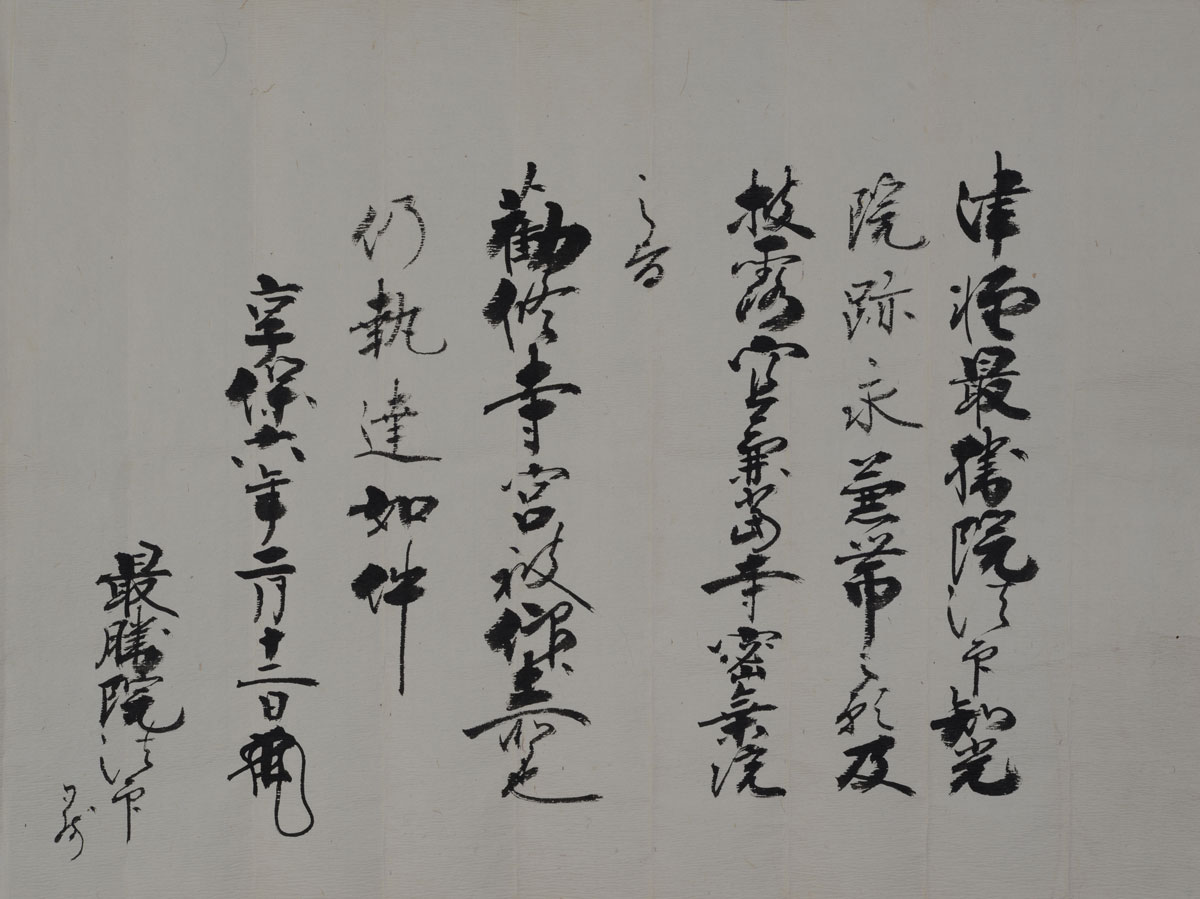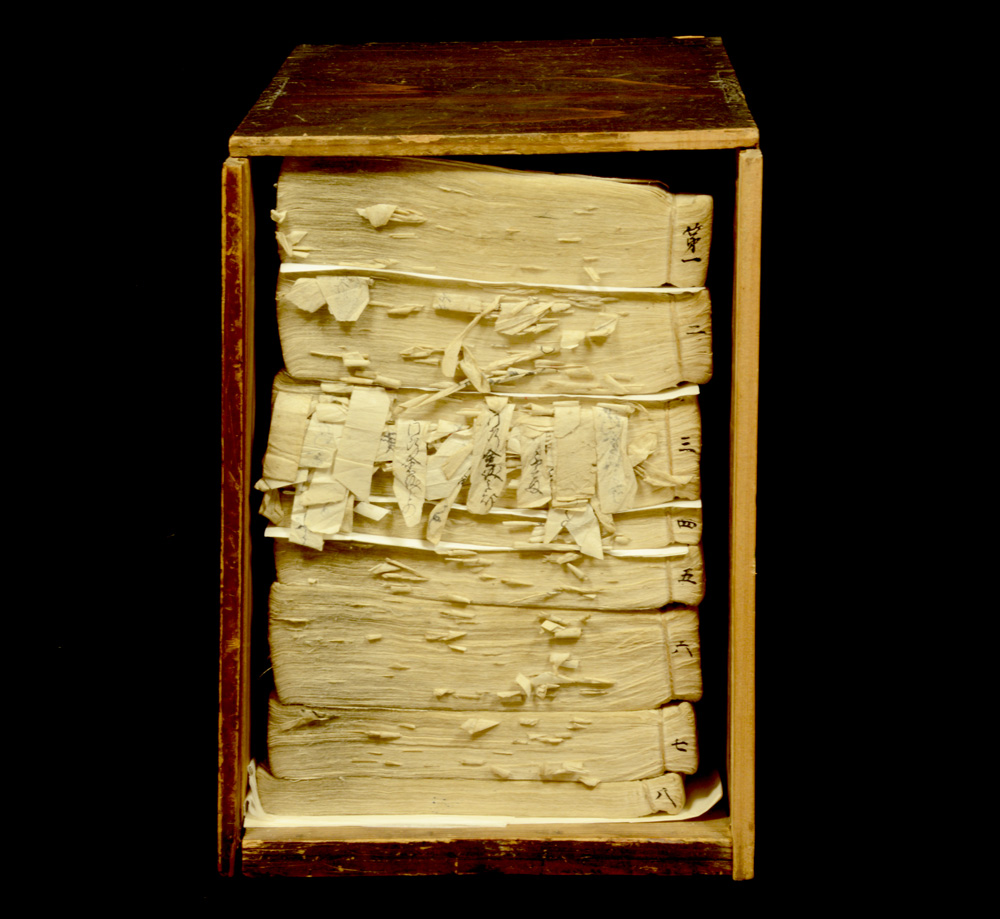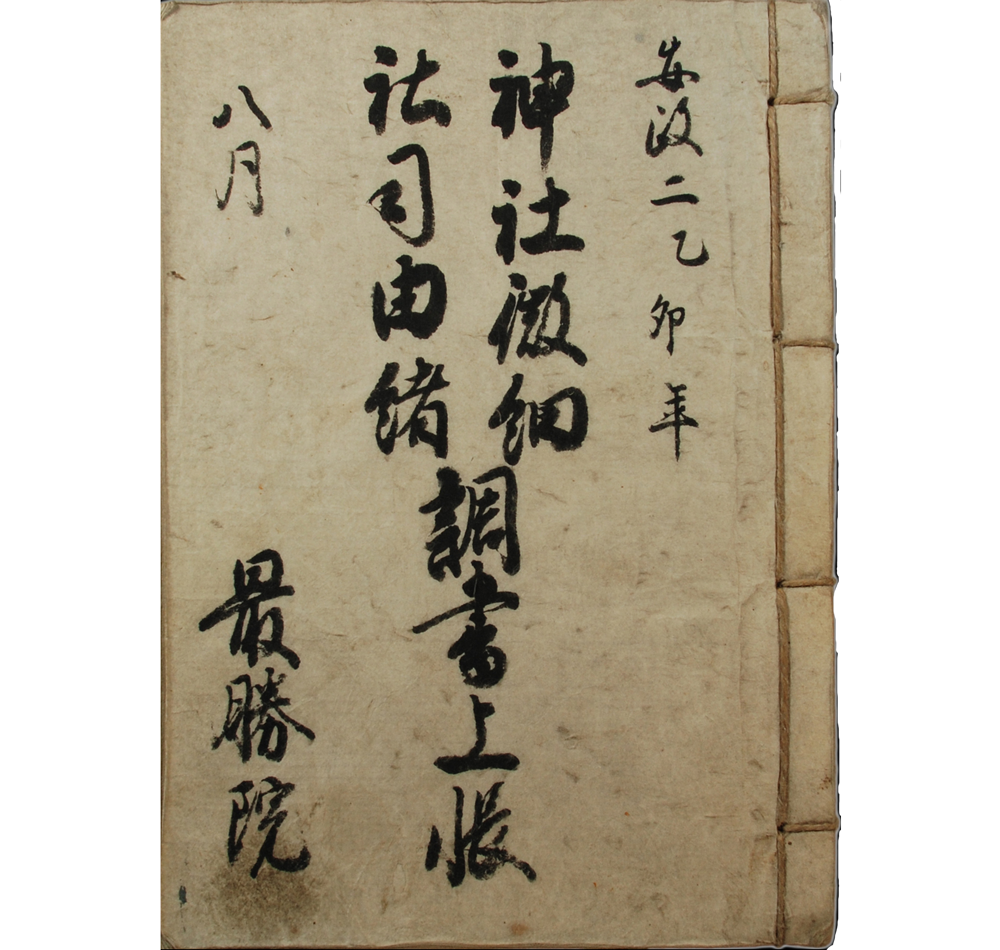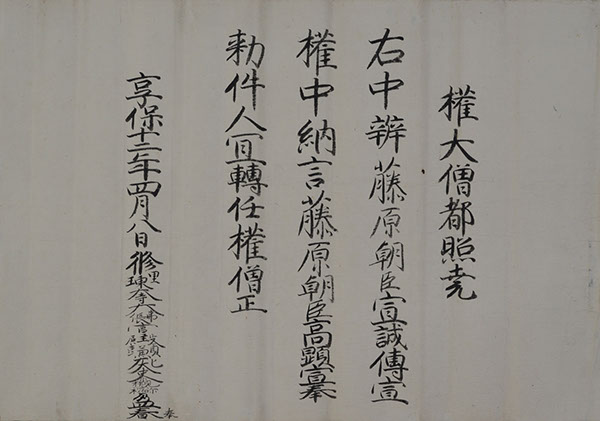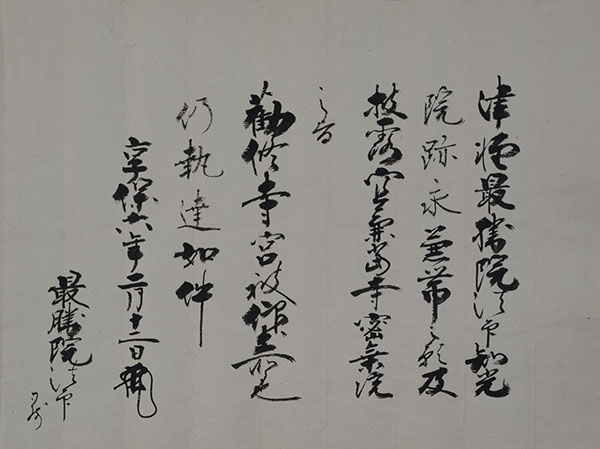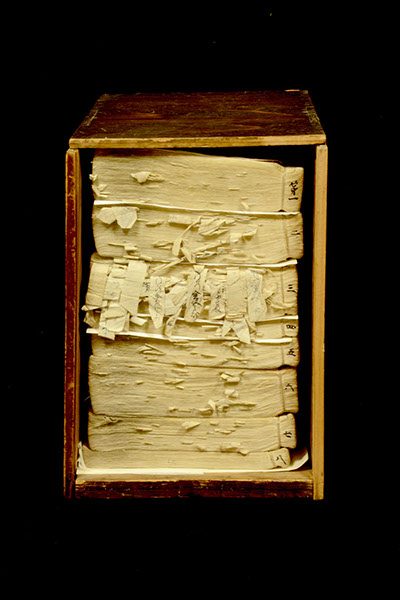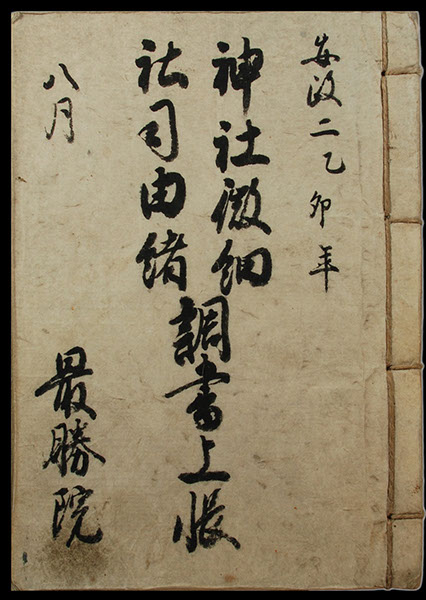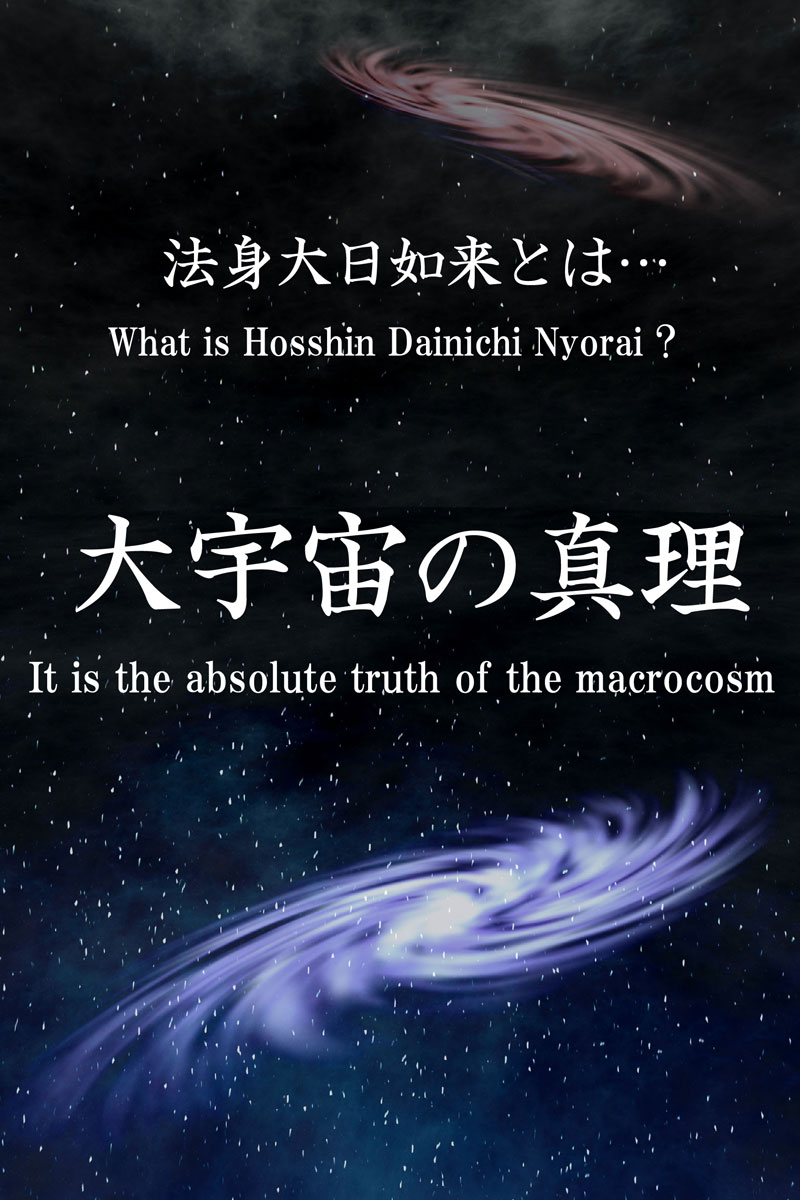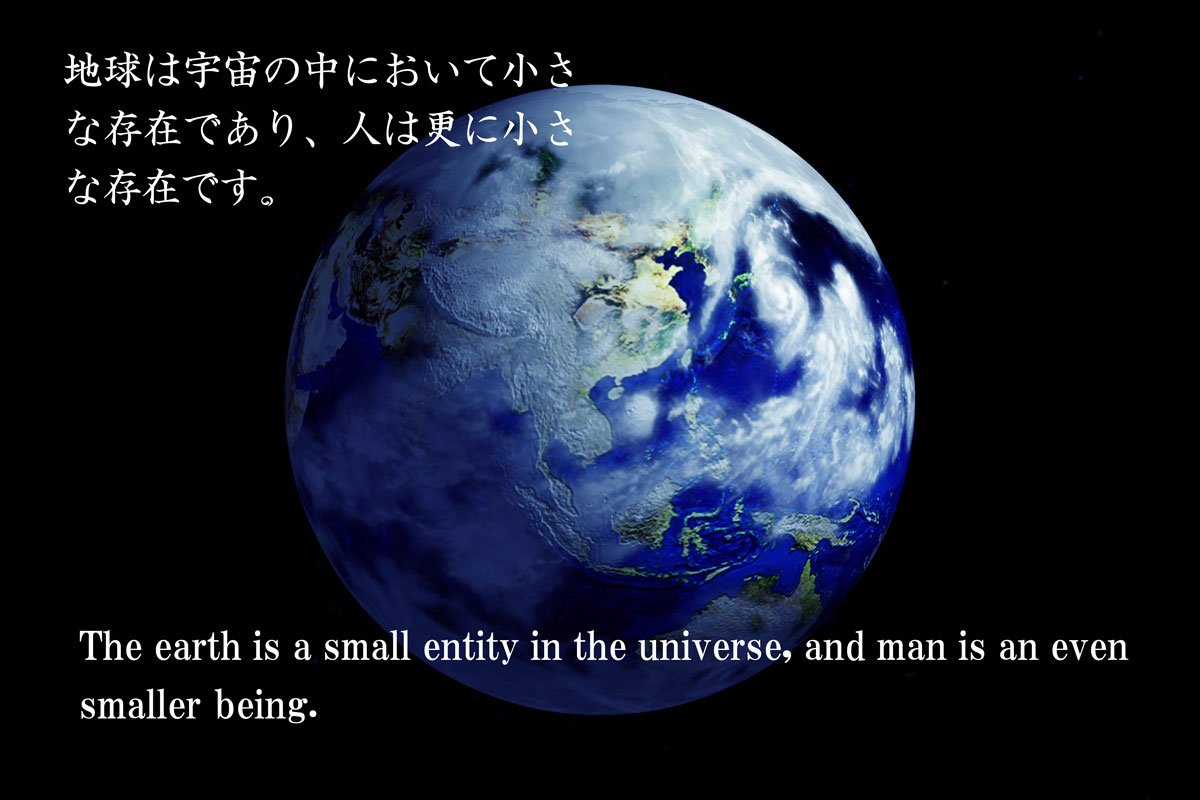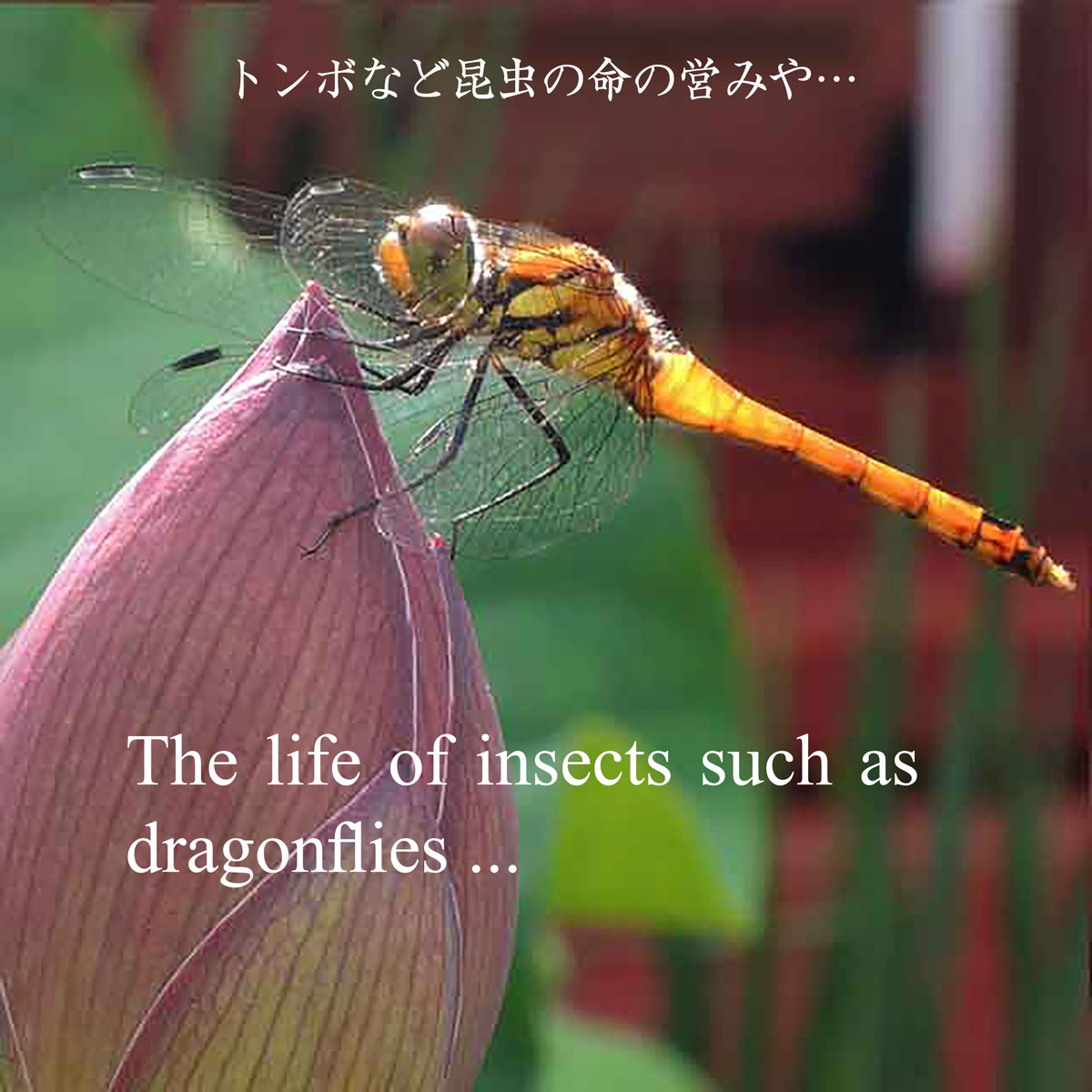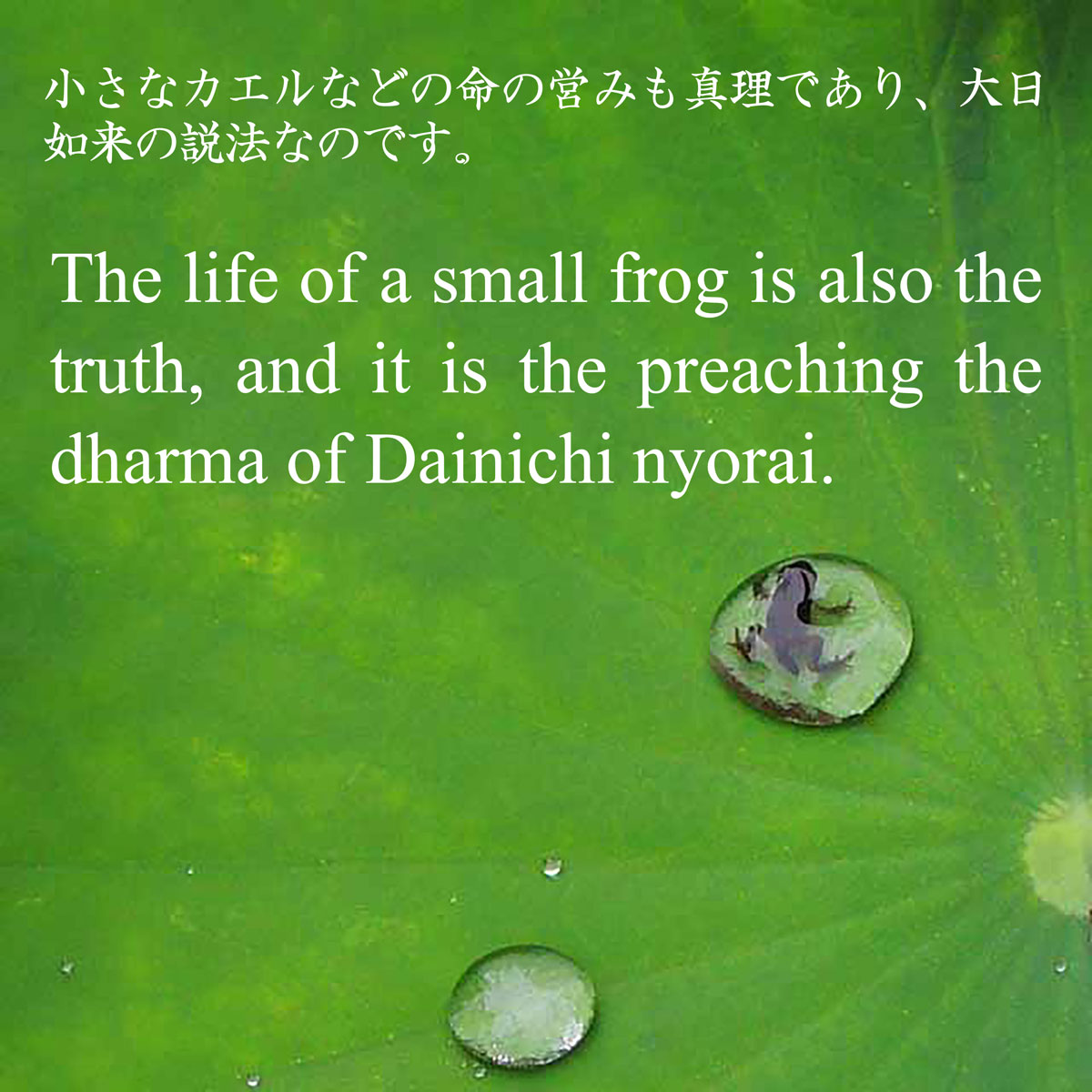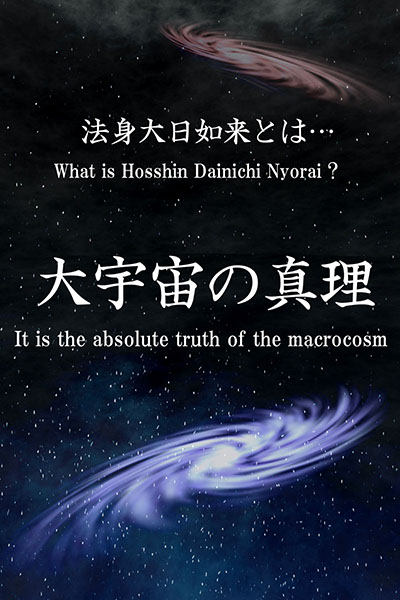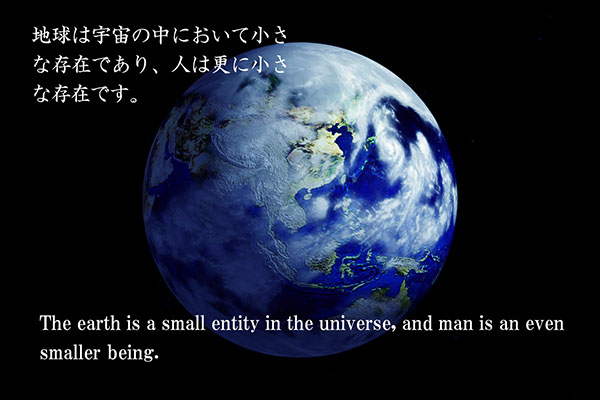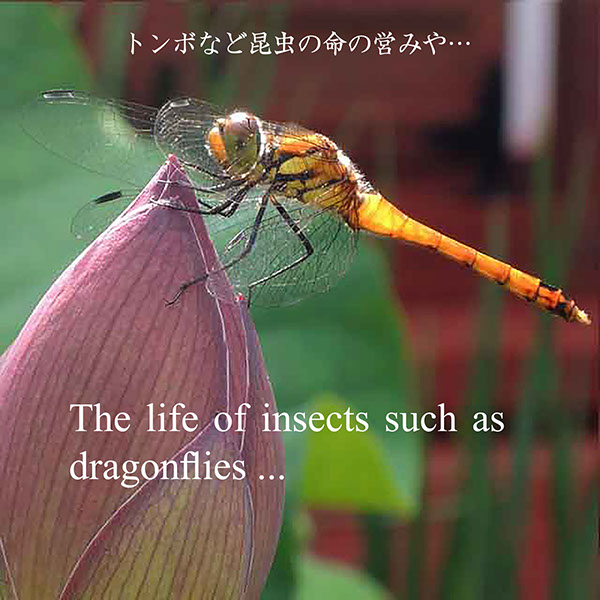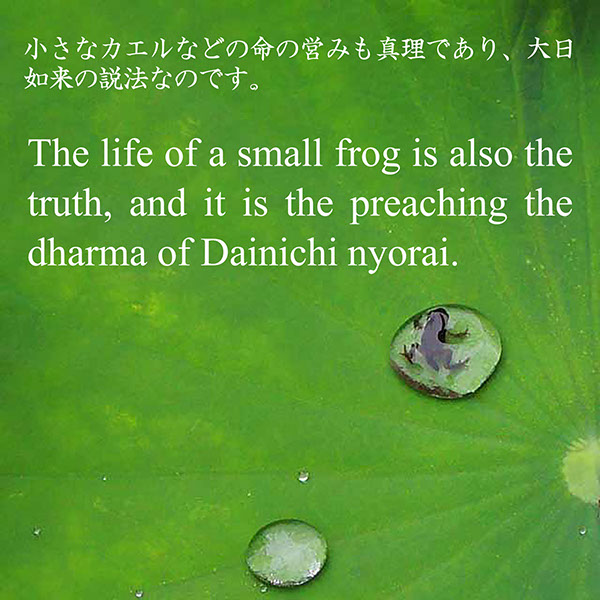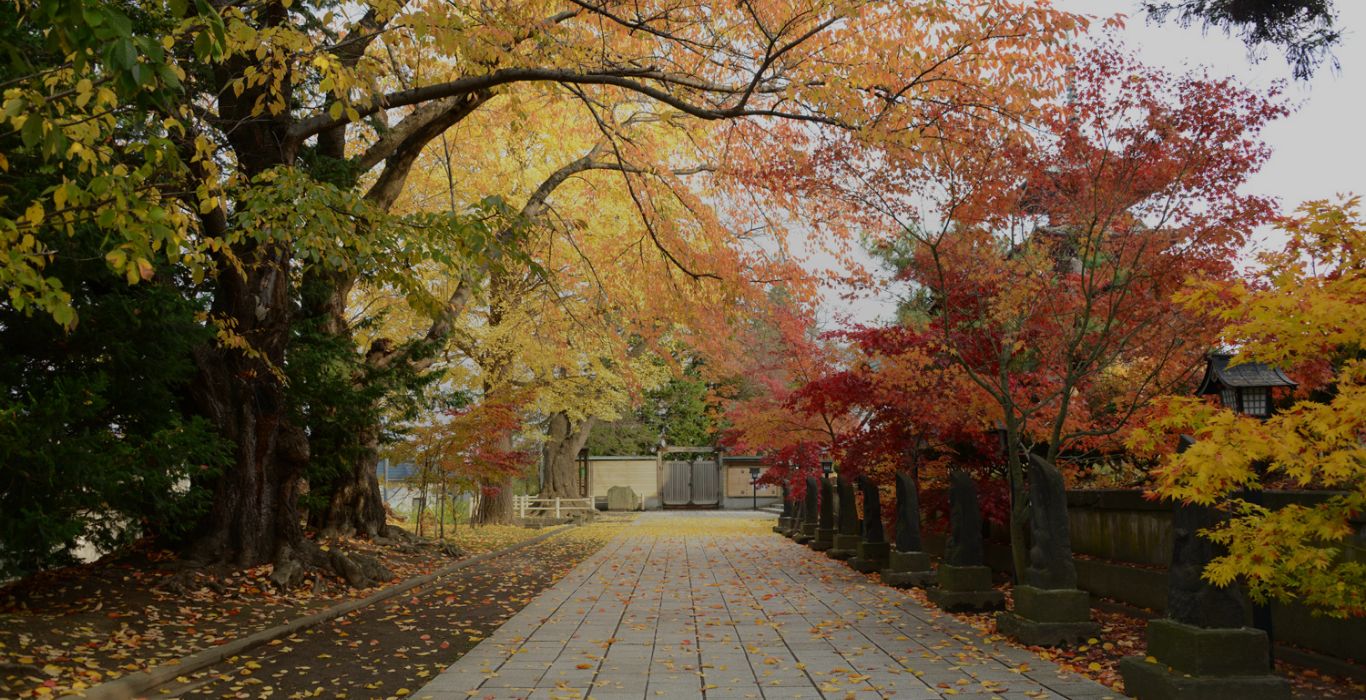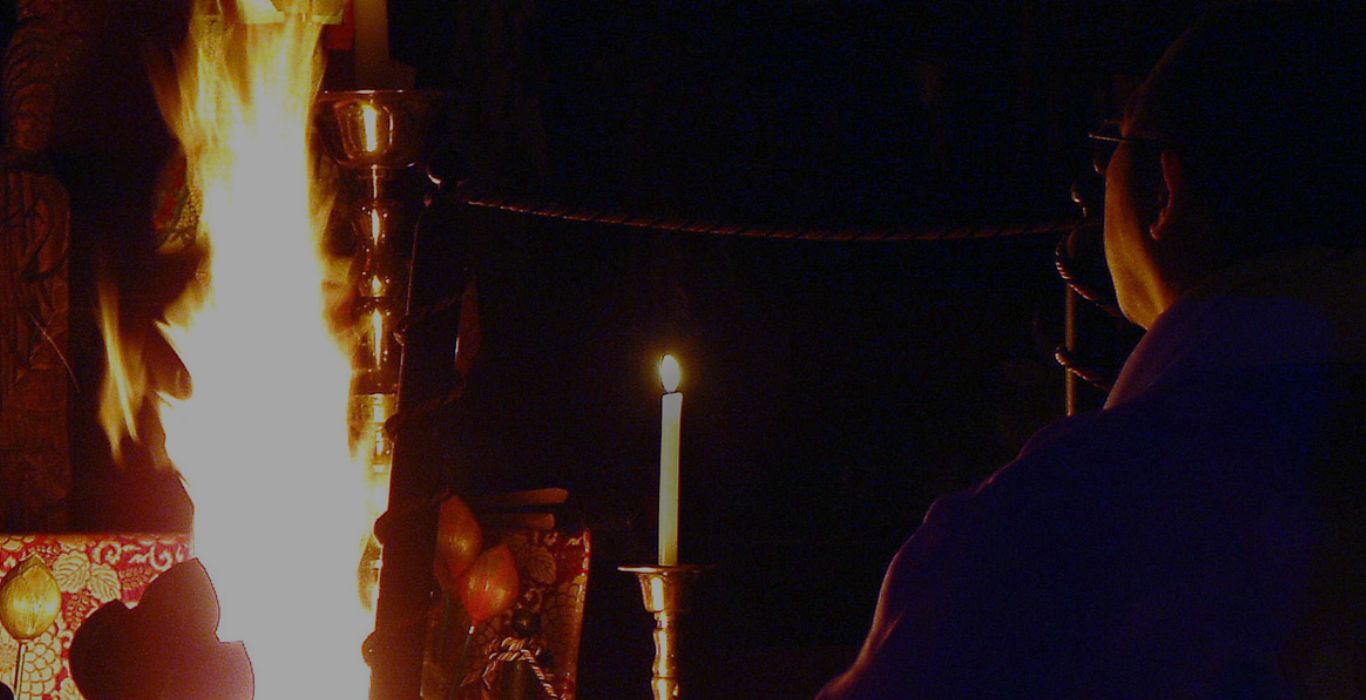Shingonshu ChisanhaKongozan Saishoin
Saishoin Temple, officially named Kongozan Komyoji Saishoin Temple, is a Shingon Buddhist temple of the Chisan sect.
Saishoin Temple is located on a hill about one kilometer southeast of Hirosaki Castle in Hirosaki, Aomori Prefecture. It was built to look down on and watch over Hirosaki Castle. The Five-Storied Pagoda, designated as a National Important Cultural Asset and praised as the most beautiful pagoda in the Tohoku region, stands in the grounds of Saishoin Temple today.
Temple Lodging
In the old days, temples where worshippers could stay overnight were called shukubo.
Saishoin Temple offers lodging that accommodates not only worshippers but also visitors to the temple.
History of Saishoin Temple
About Saishoin Temple
Saishoin Temple, officially named Kongozan Komyoji Saishoin Temple, is a Shingon Buddhist temple of the Chisan sect.
Since 1721 (Kyoho 6) of the Edo period (1603-1867), Saishoin's chief priest has concurrently served as the chief priest of Mitsujoin, a subsidiary temple of Kajuji Temple in Yamashina, Kyoto, under an alliance with Kajuji Temple, the imperial family’s temple. Saishoin’s priest has been the only priest in the Hirosaki domain to be granted the titles of “Gonsoujo” and “Inge.”
Saishoin Temple is the first ranked temple in the Hirosaki domain and the leader of various sects in Tsugaru region, and has continued to exist together with the Tsugaru family as a temple that prays exclusively for the Tsugaru family. The chief priest of Saishoin Temple has been positioned at the top of all sects, with the following considerable responsibilities.
- “Gonsoujo”
- “Inge” of Kyoto Yamashina Kajuji Temple Mitsujoin subsidiary temple
- The chief of the five head priests of the Tsugaru Shingon sect
- “Sobetto,” the head of all the shrines in Tsugaru
- As the head temple which prayed for the prosperity of the Tsugaru family, the peace of the Tsugaru region, and the stability of the people's mind, and it also supervised all temples and shrines that prayed for the Tsugaru family
Saishoin Temple is located on a hill about one kilometer southeast of Hirosaki Castle in Hirosaki, Aomori Prefecture. It was built to look down on and watch over Hirosaki Castle. The Five-Storied Pagoda, designated as a National Important Cultural Asset and praised as the most beautiful pagoda in the Tohoku region, stands in the grounds of Saishoin Temple today.
The temple is famous for the Hatsumode (New Year's celebration) and Gion-e (summer festival), and has attracted many visitors, including local residents, without interruption for several hundred years.
The Nio statue, identified as the oldest in Aomori Prefecture in 2023 during dismantling and restoration work, watches over worshippers and the Tsugaru region from the Saishoin Nio Gate with a stern but kindly gaze.
About Shingon Buddhism

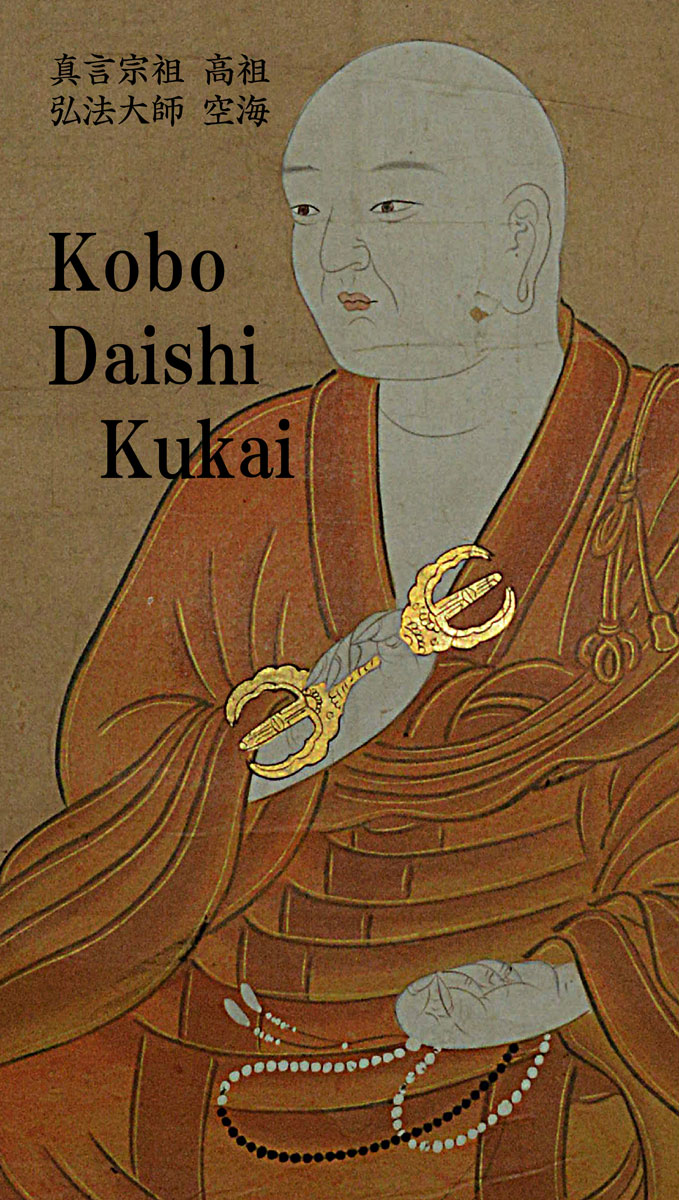
Shingon Buddhism is one of the Vajrayana Buddhist schools established in Japan, founded by Kobo-Daishi "Kukai" about 1200 years ago.
Kobo-Daishi preached many teachings, the most symbolic of which is the teaching of "soku-shin-jyobutsu." Soku-shin-jyobutsu means that we are all originally Buddha, or Dainichi Nyorai, and that through the secret laws of Shingon, we can be enlightened and become Dainichi Nyorai itself. The Shingon sect has been upholding this teaching of "soku-shin-jyobutsu" for approximately 1,200 years, and has transmitted it without any change over the years.
Principal Image “Honzon” and Its Teachings
The most important religious object enshrined in the main hall of a temple is called Honzon. The doctrine of Shingon Buddhism states that the principal object of worship, Honzon, is Dainichi Nyorai. This Dainichi Nyorai is the dharmakaya Dainichi Nyorai, which is the highest form of existence, the universe and the macrocosm itself.
The earth is a very small being in the macrocosm, and humans are very small beings within the earth. This teaching teaches that everything that exists, including the macrocosm, the earth, our lives, the activities of even smaller animals and microorganisms, the flourishing of plants, and even the great nature such as oceans, mountains, and rivers, is Dainichi Nyorai itself.
Mandala and Its Teachings
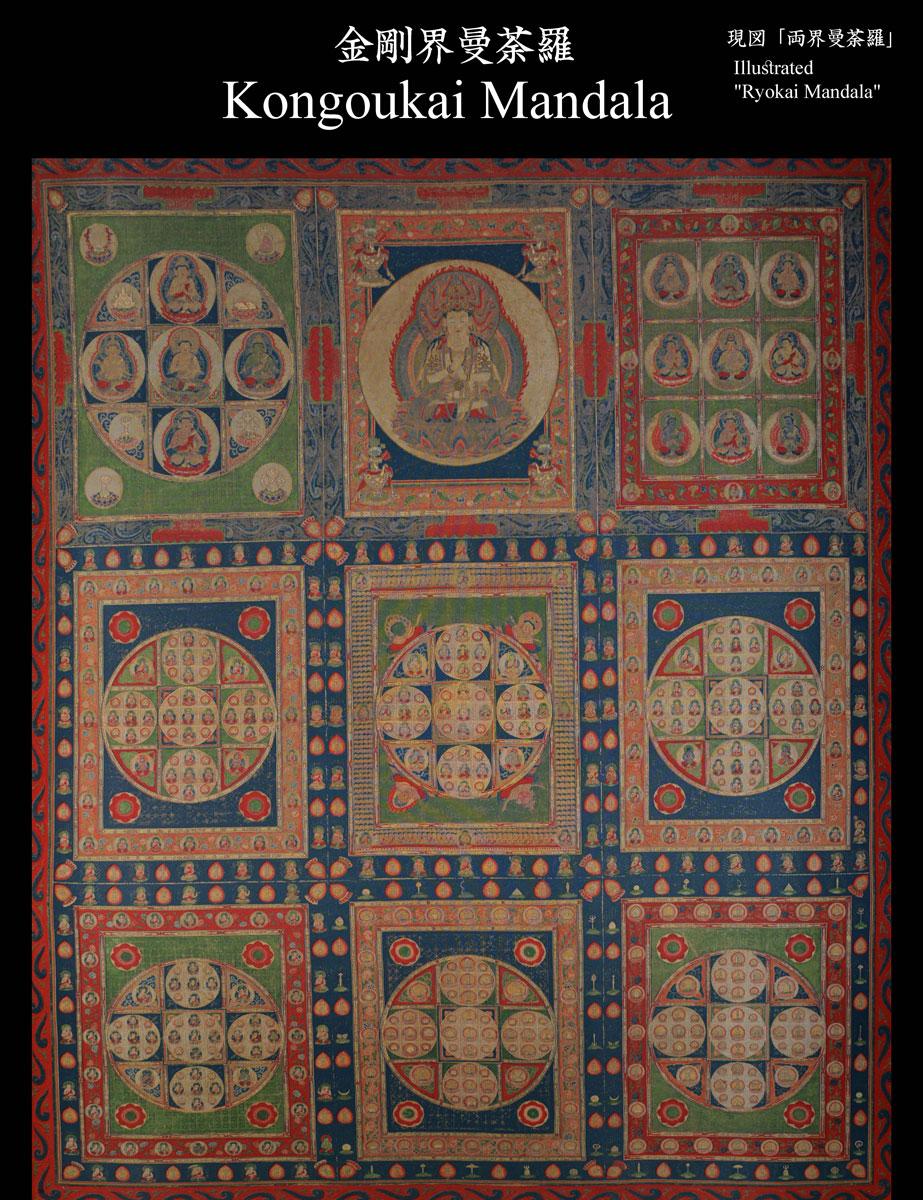
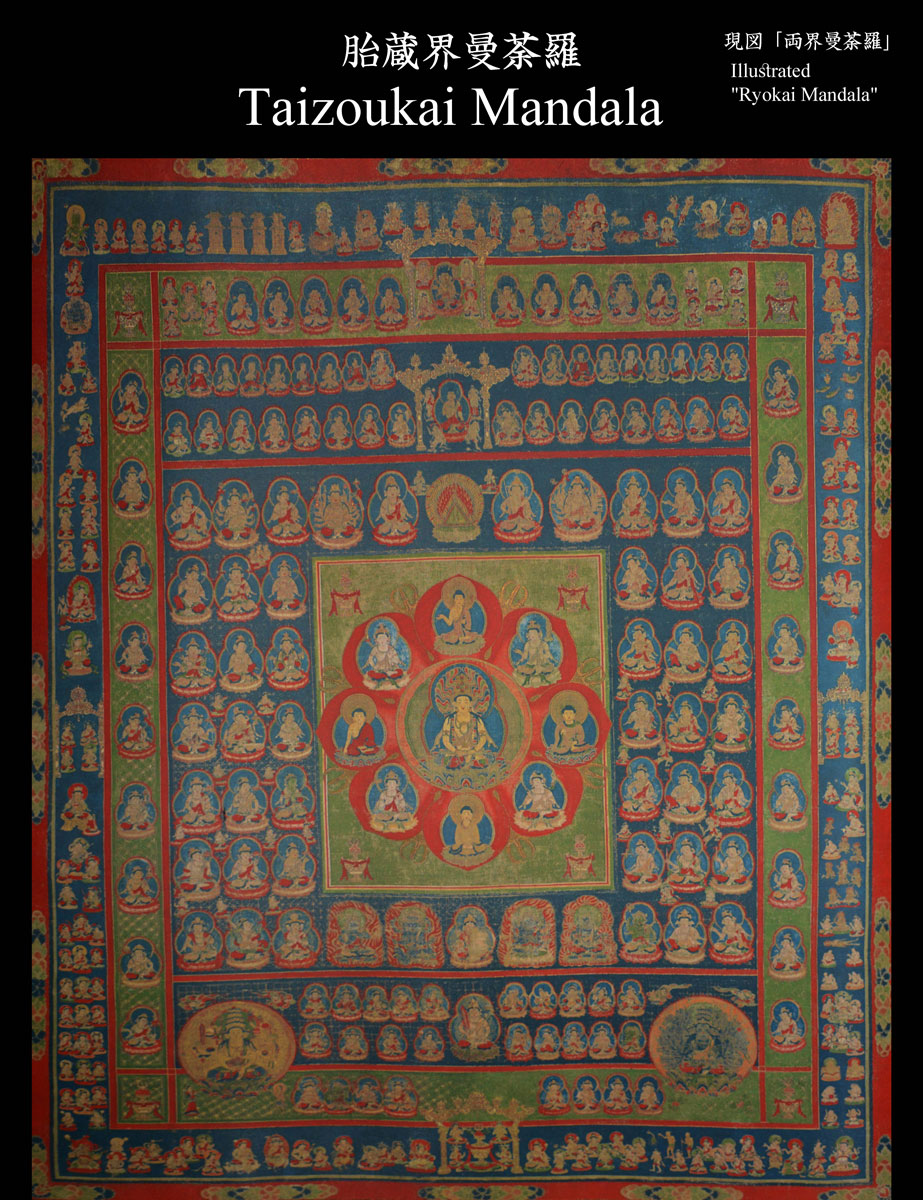
The mandala is a pictorial and symbolic representation of the teachings of the Shingon Buddhism. In Shingon Buddhism, mandalas are indispensable, thus the sect is sometimes referred to as a mandala sect. Shingon places particular importance on the mandala of two realms, or the "Ryokai Mandala."
It expresses that the two realms, Kongokai, or the Diamond Realm representing "wisdom" of the Dainichi Nyorai, and the Taizokai (*1), or the Womb Realm representing the “principle” of the Dainichi Nyorai, are inseparably linked. The mandala shown in pictorial form is called the “Genzu Ryokai Mandala.”
In many Shingon temples, this mandala is hung as a frame or hanging scroll on the wall behind the principal image. This mandala depicts thousands and thousands of beings, including Buddhas, deities, and life, with Dainichi Nyorai depicted in the center. The Mandala of the Two Realms can be said to represent the macrocosm, a pictorial representation of the profound teachings of Dainichi Nyorai.
In the Shingon sect, any of the Buddhas or Bodhisattvas depicted in the mandala may be used as the principal image, “Honzon,” of the temple.
*1 The Taizokai, or Womb Realm, is originally the "Taizo Mandala" because it is believed that "Taizo is not a realm." However, in this explanation, "Taizokai" is described as a realm to emphasize it as one of the two realms in the “Ryokai Mandala.”
Year-Round Events
Events open to the general public
- January 1Hatsumode (First Prayers of the Year)
- A Buddhist memorial service called "Shu-shou-e" is held to celebrate the beginning of the new year, and the “Gancho goma” is held to pray for worshippers.
- Early FebruarySetsubun-e
- A prayer service to celebrate the lunar New Year and pray for family safety and physical health in the New Year, generally called "yakubarai."
- June 13 Lunar CalendarGion-e
- Gion-e, also called "Daienji-no-yomiya," has a history of more than 300 years and boasts the largest crowd in Tsugaru. Rokkakudo (Nyoirin Kannon) and Gochi-nyorai-do (Gobutsu) are opened to the public once a year on this day.
The following are other major annual events and
annual memorial services held for many years
- New Year Lunar Calendar New FebruarySetsubun-kai
- Prayer to drive away evil spirits
- March 21 Lunar CalendarSho-mieku
- Memorial service to pray for the repose of the souls of ancestors and the peace and safety of people living today, while celebrating the anniversary of Kobo Daishi's death
- Late MarchHaru Higan-e
- Memorial Service for Ancestors
- April 8 Tanjou-e
- Memorial service to celebrate Buddha's birthday, Kanbutsu-e and Flower Festival
- August 13thUrabon-e
- Buddhist memorial service for ancestors
- Late SeptemberAki Higan-e
- Buddhist memorial service for ancestors
- October-NovemberShichi-Go-San Shukutou-e
- Buddhist memorial service to pray for the healthy growth of children
Access
| Address | 63 Doya-machi, Hirosaki-shi, Aomori 036-8196, Japan |
|---|---|
| Admission Hours | 9:00 AM - 4:30 PM (last admission at 4:00 PM) |
| Routes |
|

